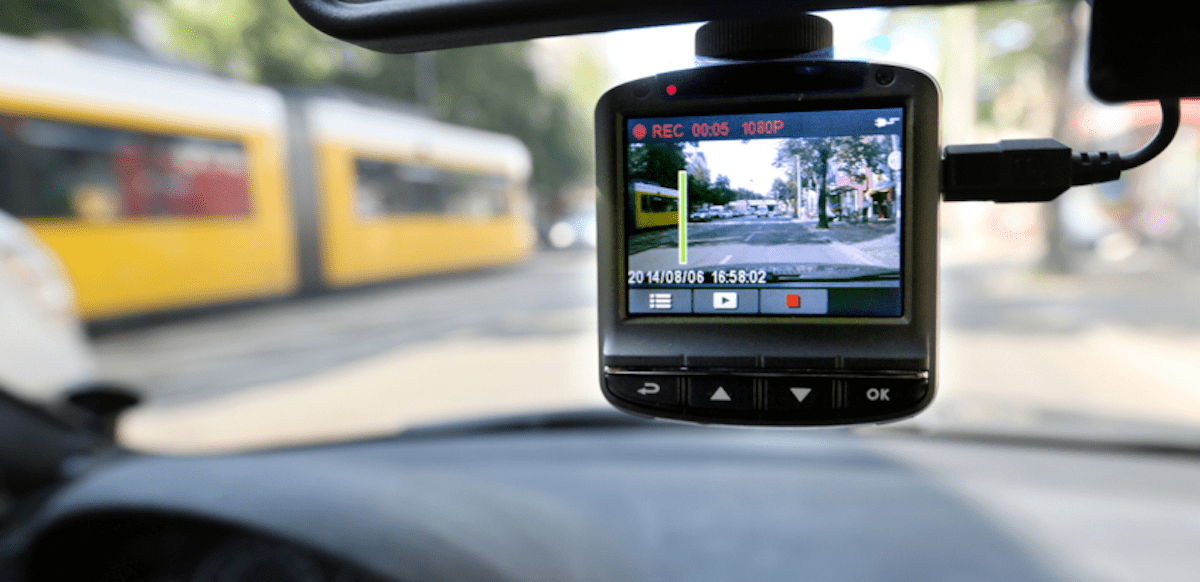The dashcam is a useful, small piece of electronic equipment many of us choose to include in our cars today. The job of the dashcam is to continuously record what is happening in front, behind or even to the side of your vehicle. There are many reasons as to why dash cams are purchased. These include the ability to capture unexpected road accidents, as well as to use as evidence against fraudulent claims.
But are dashcams worth your money? Read our review to find out.
After you have purchased your dashcam, what to do next may get confusing. Where do you mount the dashcam to have the best results? Alternatively, where do you even plugin your dashcam? Continue reading to find out the answers.
The Best type of Dash Cam Mount
The majority of dashcams will come with one of two types of mount. Double-sided tape or suction cup.
Double-sided tape
Once you attach double-sided tape to the windscreen of your car, you are likely to find it difficult to reposition. Therefore, when securing the mount to your windscreen, it is crucial to have a clear idea as to where you want to position the dashcam.
It is also recommended to use someone with a steady hand to fit it exactly right the first time.
Suction Cups
Suction cups are highly convenient in that they are simple to fit, and can repeatedly be repositioned when you want to move the location of your dash cam. In most cases, the suction cup is unlikely to detach from the windscreen.
However, it is essential if when purchasing one separately, you ensure it can hold the weight of your dashcam. This will reduce the risk of it falling off while you are driving.
NOTE: If your car has black coloured dots on the windscreen, suction cups are not a good idea. This is as they can make it difficult for the suction cups to grip onto the windscreen when placed over the top of them.
Where to Mount your Dash Cam
Once you have decided on which type of mount you want to use for your dash cam. The next decision is to where you are going to place it.
The recommended place to position your dashcam is behind the rear-view mirror. This is as it will be able to record both lanes ahead of you, while not obstructing your line of sight.
It can be tempting to place it somewhere accessible, such as where you may put a smartphone or sat-nav. But as, in most cases, you won’t be required to use the dashcam while driving. It is best to place it somewhere you won’t be distracted by it.
How to plug in a dash cam
So you’ve positioned your mount in the desired position, and your dashcam is sitting comfortably. Now, what is the best way to get power to your dashcam?
Cigarette Lighter
Plugging a dashcam into the cigarette lighter is probably the most common way of powering a dash cam as it is the easiest and, for most people, is the most convenient.
To utilise the cigarette lighter as a power source follow the steps below:
- Guide the provided power cable around your windscreen,
Neatly tuck the wire across the top of the windscreen and down the side to keep the dashcam out of site. Most cars include a gap between the roof lining and the windscreen where the cable should easily slot into place.
Plug in the dashcam cable into the cigarette lighter, making sure it is not obstructing the driver’s side of the vehicle. This will reduce distraction and may help prevent accidents.
Positives of the Cigarette Lighter
- You can quickly plug in and go
- Easy to connect/disconnect, ideal if you will be using the dash cam in multiple cars
- The power supply can easily be found should you need it
Negatives of the Cigarette Lighter
- It will require the cigarette lighter socket which may be a problem if your car only has one.
- The cable may be visible. For example where it may slip out of the gap between the lining and the windscreen. As well as where the cable connects to the cigarette lighter
Hardwiring
Hardwiring is the process of connecting the dashcam directly to your cars electrical circuits. Ideally, you should seek a professional to do this for you. Your local electronics specialist should be able to do this for you, and it shouldn’t cost too much either.
But why would you want to go through the extra effort of having your dashcam hardwired?
Positives of Hardwiring
- Will turn on and off as and when you start your engine
- The wires will be hidden away under your dashboard
- Always connected taking away the need of setting it up every time you drive
- Frees up the cigarette lighter
Negatives of Hardwiring
- Will initially take longer to setup and install
- May require professional help
Conclusion
Overall, it can be said there are advantages and disadvantages to both options of mounting your dashcam, as well the different ways of transferring power to your dashcam. It all depends on personal preference and will be determined by your requirements.
If you are yet to invest in a dashcam and are wondering which one is best, take a look at our best dash cam guide.
